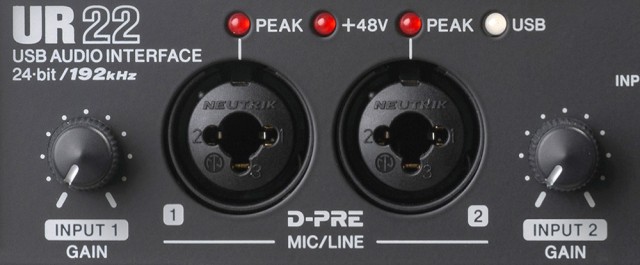Reader Joel Carlo (aymat) – a digital media developer based out of Barcelona, Spain – shared his detailed review of Steinberg’s new UR22 USB Audio Interface.
The Steinberg UR22 is a 2-in/2-out, bus-powered audio and MIDI interface aimed at the home studio and mobile markets.
“There are plenty of choices available when choosing a compact audio interface and finding one that fits your needs can be a bit cumbersome when making comparisons. It seems that most interfaces fall under manufacturers who throw everything and the kitchen sink into an interface or manufacturers who streamline features in order to reduce costs,” notes Carlo.
He adds, “At a street price of $149, you’d be hard pressed to find other interfaces in its class with as many features. Add seamless Cubase integration with solid reliability to boot and its a very hard deal to beat.”
See Carlo’s site for the full review.


Is it possible to use “more than one” audio interfaces in Cubase simultaneously? I have two, one connected through USB and one through Firewire, and would like to combine them with more USB audio streams from synths in one setup based on Cubase 7, but cannot do it. How can i add a new soundcard to Cubase 7 without desellecting the previous one?
As far as I know, this isn’t something you can do natively in any DAW. Sound on Sound has a good rundown of why most daw’s won’t work with multiple audio interfaces and some workarounds from 2006.
You could use a 3rd party application to pipe a single virtual audio stream to cubase (Soundflower works on a mac, I’m sure there’s something comparable for PC). But this will kill your latency.
Your best bet is probably to take a look at the digital ins and outs of your interfaces. Most interfaces have some SPDIF or optical connections that can handle 2+ ins/outs. You can then use your ‘slave’ interface’s control panel to pipe audio from your analog inputs to your ‘master’ interface. You may have to mess with the timing a bit but you latency will suffer less. Hard to say more without knowing exactly what your interfaces are.
Check out the free ASIO4ALL driver. It will wrap all your devices into one, and you can select any combination of physical inputs and outputs.
Thanks. That seems like a nice idea, but i’ll have to check the total latency.
Latency is no higher than native drivers, and it is often better.
Hi Sotiris, if I’m not mistaken, you can only use a multiple card setup if they are using the same ASIO driver. Otherwise I don’t think its possible. What interfaces are you running?
Thanks. Older synths are connected through a M-Audio 1814 (firewire) and a Roland M-16DX (USB 2) audio interfaces, plus Novation Ultranova and Xstation and Yamaha MOX8 which stream audio through USB and Korg M3 which streams audio through firewire. I’d love to be able to record them all at once! (Yeah, i know …)
Sounds like an awesome setup! You should definitely try out asio4all and see if it meets your needs. I just work with macs so I can’t really comment on how well it works, latency-wise. Unfortunately it looks like the M16DX has optical SPDIF out rather than ADAT so it only does 2 channels in or out. If low latency is what you’re going for, I suspect you’ll get the best results sending the mix from the M16DX to the 1814 via SPDIF But of course you’d lose the ability to record those instruments individually.
Anybody do a teardown on this? I’d love to see what the chipset is and how they’re clocking these. 192kHz doesn’t mean much if the clock is all over the place.